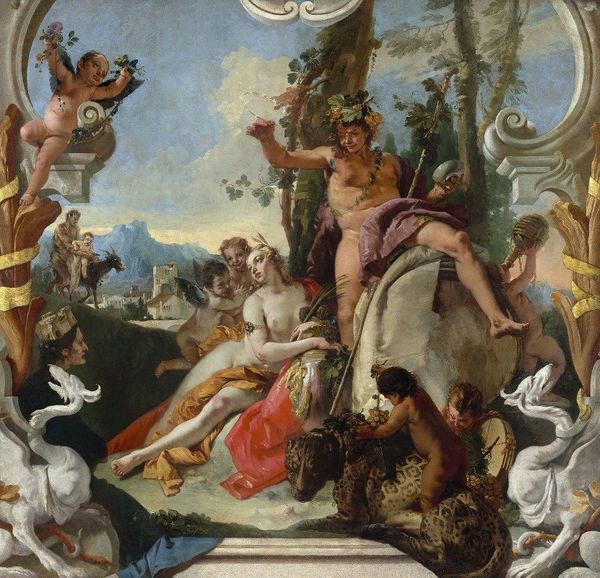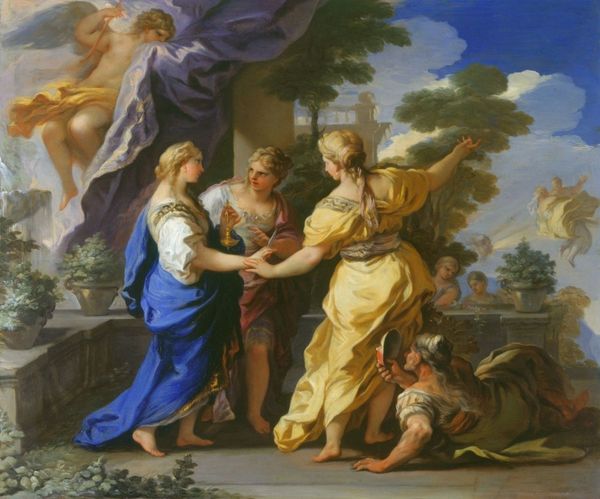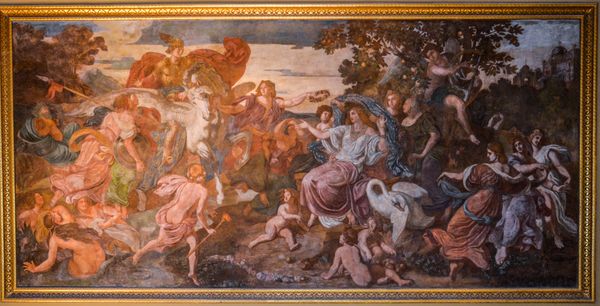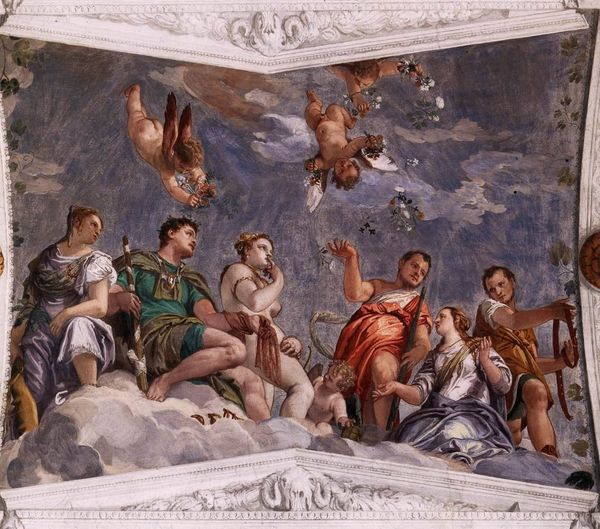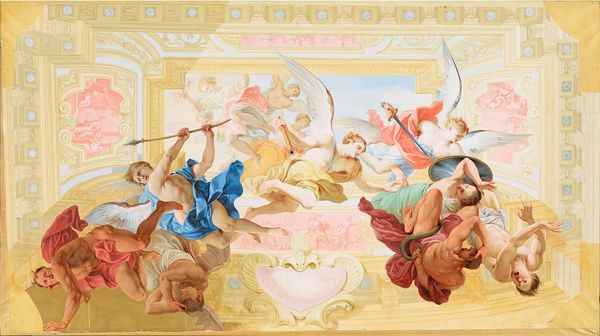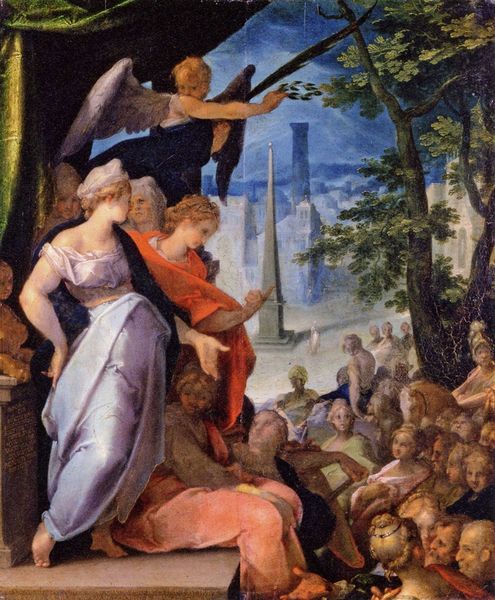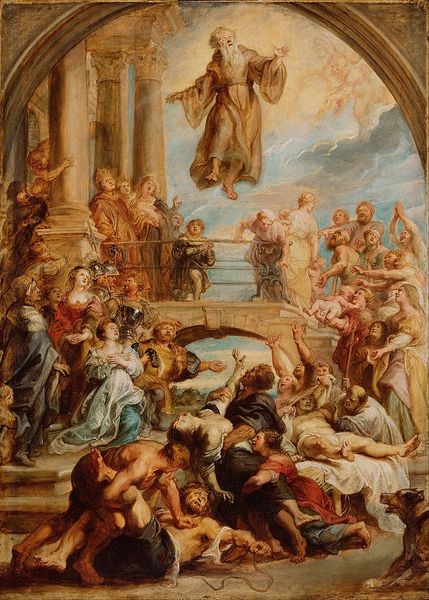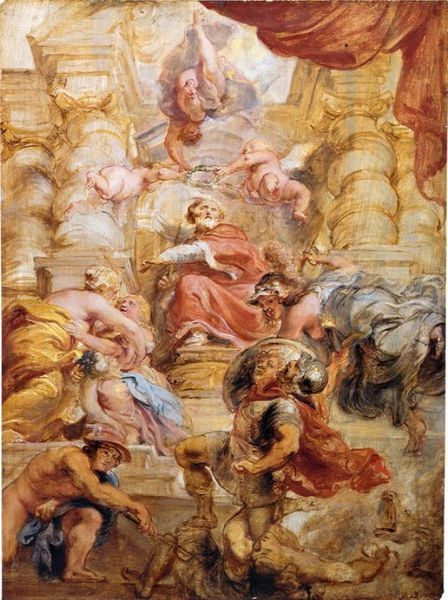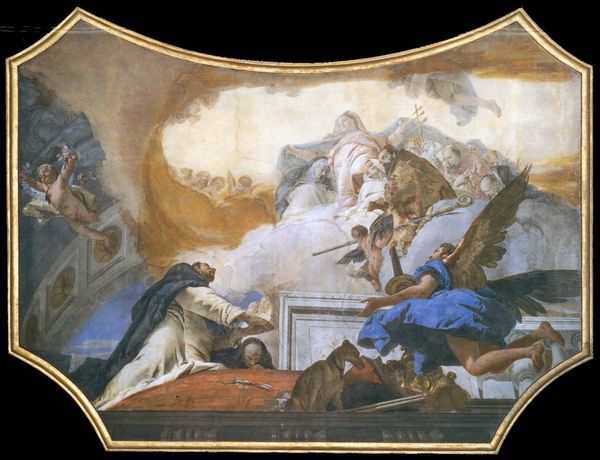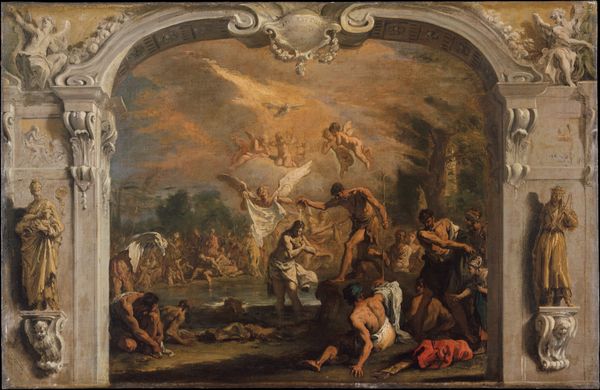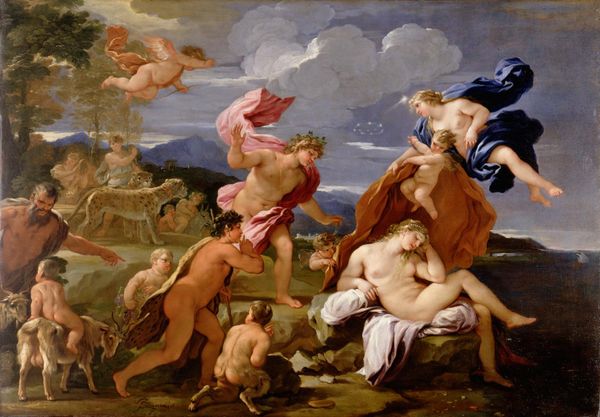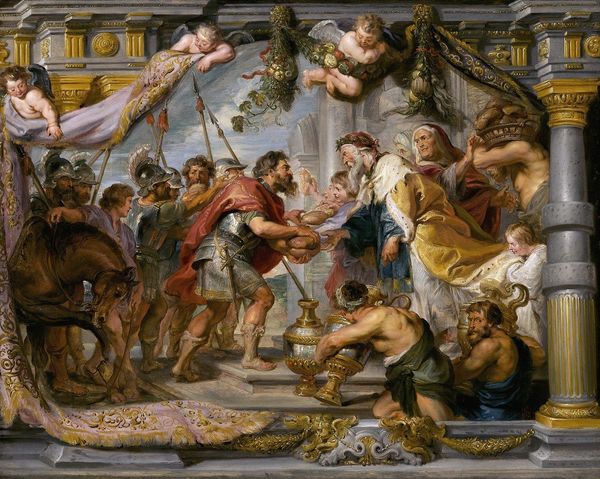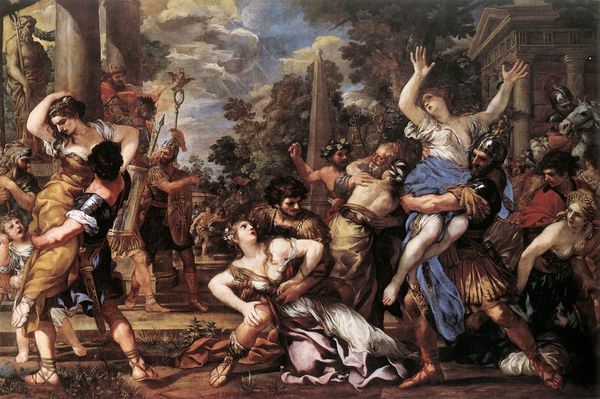
fresco, mural
#
allegory
#
baroque
#
landscape
#
figuration
#
fresco
#
oil painting
#
roman-mythology
#
mythology
#
history-painting
#
academic-art
#
italian-renaissance
#
mural
Copyright: Public domain
Curator: What a scene! This fresco absolutely explodes with dramatic energy and violence. The artist, Pietro da Cortona, really knew how to capture a sense of chaos, don't you think? Editor: Absolutely. The sheer emotional intensity, captured with that Baroque flair, is instantly striking. And knowing it's a fresco – imagine the scale, the labor, the very public declaration it makes on the wall! Can you tell us more about it? Curator: This is “The Age of Iron”, dating to around 1641, part of his commission within the Palazzo Pitti in Florence. It’s an allegorical scene, drawing from Roman mythology to comment on societal decline, the move away from idealized virtue to a period marked by conflict and greed. Editor: Ah, that explains the clash of bodies, the sense of breakdown. Visually, Cortona creates this incredibly dynamic spiral composition, pulling the viewer's eye from the chaotic ground level up to the escaping figures near the columns. The motifs associated with prosperity, those leafy garlands draped across the top, now seem bitterly ironic. But what symbols might be less immediately visible? Curator: Well, observe the figures themselves. You see innocence assaulted—a child caught in the turmoil—as well as the brutality of the soldiers and the anguish of those who plead for mercy. These embody not just physical violence, but also the moral corruption that the 'Age of Iron' represents in the classical narrative tradition. Editor: And that classical reference, the "Age of Iron," carries so much weight through centuries of political upheaval and changing moral codes, it allows audiences even today to examine how power shapes—or misshapes—social behaviour. It suggests continuity and consequence. Are we doomed to repeat history’s darker ages? Curator: It’s a warning, really. And its location within the Palazzo Pitti adds another layer of meaning. Think about who commissioned this, what messages they were keen to communicate, how the image plays to the power of display and courtly influence. Editor: Exactly! Frescoes, especially of this scale, were statements of power, ambition, and very specific ideas. "The Age of Iron," far from being simply a scene from mythology, invites viewers to reflect upon Florence, their era, and their ethical responsibilities. It all serves as a sober reminder of our choices. Curator: Ultimately, Pietro da Cortona invites us to look into a historical mirror reflecting forward to question what cultural values we’re prioritizing or surrendering, lest we repeat these iron age cycles ourselves. Editor: I concur! Its relevance endures, pushing us to recognize not only beauty in execution but also depth in the reflection, bridging mythic violence with the present's challenges.
Comments
No comments
Be the first to comment and join the conversation on the ultimate creative platform.
